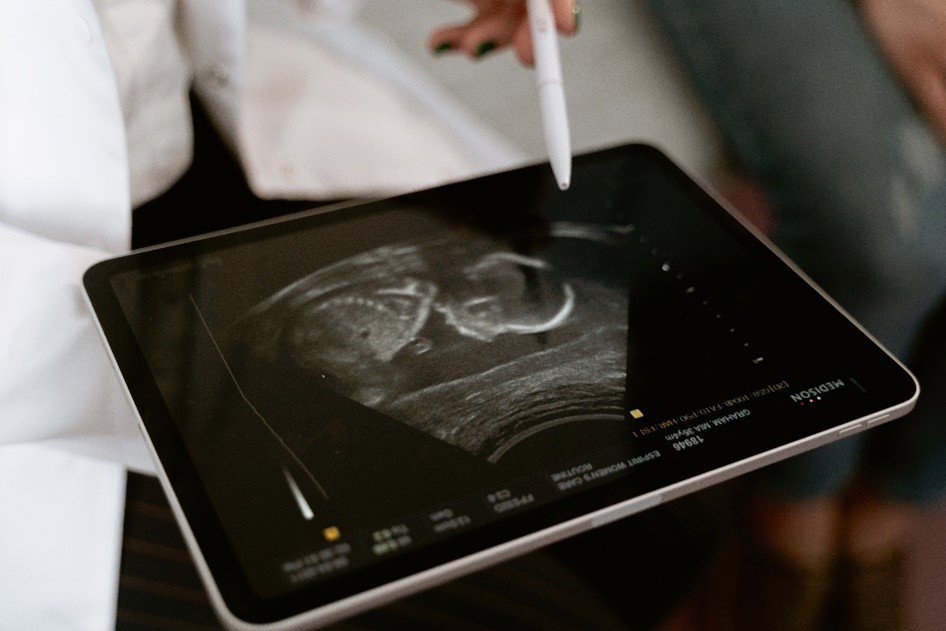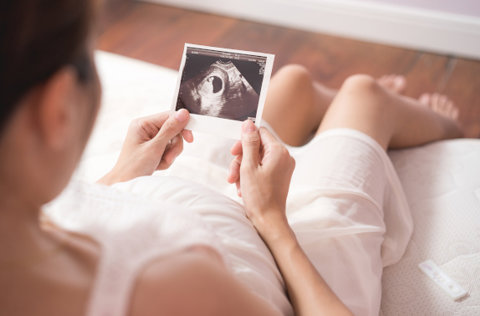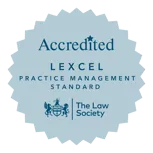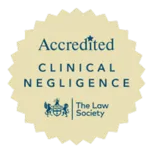Birth Injuries During Delayed or Obstructed Labour
In cases where the baby is too large to pass through the pelvis, a normal delivery might not be possible. If a vaginal birth is attempted, it could involve using instruments like forceps or employing specific techniques to aid in the delivery process. In such cases, the baby's head might be affected or, in other situations, the head could be delivered while the shoulders get stuck behind the mother's pelvic bone. This situation is referred to as Shoulder Dystocia, posing a medical emergency.
In the event that vaginal delivery isn’t possible or there are signs of foetal distress with evidence of the baby becoming oxygen deprived, an emergency caesarean section, more commonly referred to as a c-section, may be necessary.
A caesarean section is an operation to deliver the baby through a cut made in the stomach and the womb. The cut is usually made across the stomach, just below the part of the body typically referred to as a ‘bikini line’.
A caesarean section is a major operation that carries a number of risks so typically it is only carried out if it’s considered to be the safest option for both the mother and the baby. It is estimated by the NHS that around 1 in 4 pregnant women in the UK will have a birth by caesarean section.
In cases of shoulder dystocia caused through delayed or obstructed labour where a caesarean section hasn’t been arranged, the baby is at risk of suffering nerve damage to the brachial plexus which could result in an Erb’s Palsy injury and paralysis of the affected arm.
If oxygen deprivation is suffered due to a delay in delivery, this can be severe enough to cause brain damage and Cerebral Palsy. Both Cerebral Palsy and Erb’s Palsy injuries are catastrophic and can go on to require lifelong care and support. If you’ve experienced a delay which has resulted in harm occurring to you or your baby, our Medical Negligence team here at Simpson Millar are here to help you.

Birth Injuries During Premature Labour
Premature labor, also known as preterm labor, refers to the onset of labor before the 37th week of pregnancy. In extreme prematurity where babies are born before 30 weeks’ gestation, there’s a much higher risk of respiratory problems and the need for a baby to need assistance breathing, resulting in ventilation at birth. Sometimes premature labour can be halted by administering intravenous drugs which stop the contractions.
Medication can also be delivered which can prepare the premature lungs for delivery to reduce the risk of breathing problems. Premature babies generally require admission to the Neonatal Unit for a period of time.
Birth Injuries Resulting In Excessive Bleeding
Bleeding can happen after giving birth or during labour for many reasons, including:
- Cervical insufficiency when the cervix opens too early
- Placenta praevia, when the placenta lies too low in the uterus and over the cervix
- Placental abruption, when the placenta separates from the lining of the uterus
- Preterm labour
- Uterine rupture
A severe ante partum haemorrhage (APH) can put the mother at risk at well as the baby and can need an emergency C-section to save both their lives. Severe bleeding after delivery, or post-partum Haemorrhage (PPH), can also be life-threatening to the mother.
Birth Injuries Arising From Retention of Retained Products
This isn’t uncommon and occurs when part of the placenta and/or membranes are retained in the uterus following delivery. As a result, the womb can’t contract back properly, leaving a mother at risk of bleeding and infection. In worst cases where there is a delay in diagnosing and treating retained products, surgery may be required.
Negligence Resulting In Perineal Tears
Mothers can suffer perineal tears during delivery of their child. This is done by a doctor or a midwife and is when they need to make a cut during childbirth in the area between the vagina and the anus – this area is known as the perineum. The procedure of cutting the perineum is called an episiotomy.
An episiotomy makes the opening of the vagina a bit wider which allows the baby to come through it more easily. Sometimes a woman’s perineum may tear as the baby comes out naturally anyway. In some births, an episiotomy can actually help to prevent a more severe tear or it can speed up delivery if the baby needs to be born quickly.
Whilst this isn’t necessarily negligent or generally seen to be an attendant risk of delivery, if a 3rd or 4th degree tear involving the anal sphincter isn’t properly identified and repaired, this can lead to serious problems including faecal incontinence.
Birth Injuries Caused By Pre Eclampsia
This is a condition that affects some pregnant women, usually during the second half of their pregnancy from around 20 weeks onwards. It can also affect women who have given birth soon after their baby has been delivered.
Early signs of pre eclampsia can include having high blood pressure and protein in the urine. It’s likely that these signs would be picked up during a routine antenatal appointment. In some cases, further symptoms can develop including:
- Severe headache
- Vision problems, such as blurring or flashing
- Pain just below the ribs
- Vomiting
- Sudden swelling of the face, hands or feet
In some cases women require medication to treat pre eclampsia, but in extreme cases a caesarean section may be necessary to save both the mother and the baby.
Although many cases are mild, the condition can lead to serious complications for both the pregnant woman and the baby if it’s not properly monitored and treated. The earlier that it’s diagnosed and monitored, the better the outlook will be for both the mother and the baby.
Risk of Birth Injuries Multiple Pregnancies
Twin pregnancies and other multiple pregnancies can be more hazardous, as they carry an increased risk of premature rupture of the membranes and premature labour. These pregnancies are generally monitored more closely and though normal delivery is possible, a caesarean section may be necessary.
Because of this, the number of tests and scans you’ll be offered throughout your pregnancy may be increased, with most women with multiple pregnancies being offered an ultrasound scan at around 11 to 14 weeks. This is considered the best time by the NHS to find out what type of placenta and membranes the multiple pregnancies have.
While most multiple pregnancies are healthy and often result in healthy babies, there are more risks to be aware of when going through a multiple pregnancy. Throughout your pregnancy, you may be at higher risk of pregnancy complications, such as iron deficiency anaemia and pre-eclampsia.
Additionally, twins and triplets have a higher risk of being born prematurely. A premature birth is typically deemed to be before 37 weeks or pregnancy. The babies are also more likely to have a low birth weight. It is estimated that around 6 in 10 twins are born before 37 weeks and almost 8 in 10 triplets are born before 35 weeks.
You may be offered a planned birth instead as it can be dangerous for multiple pregnancies to carry on beyond this point.
What Steps are Taken to Prevent Birth Injury?
To prevent and reduce risks of birth injuries, careful measures are taken antenatally and in labour to monitor a baby’s wellbeing, to include:
- Recording of the foetal heart rate on a CTG monitor
- Assessment of foetal growth abdominally or by ultrasound scan
- Taking foetal blood samples in labour to check for levels of possible oxygen deprivation
- Assessment of maternal wellbeing by checking blood pressure, urine and bloods to ensure readings are normal
If, despite all efforts, a mother or baby suffers an injury, it’s important to get legal advice from a specialist Medical Negligence Lawyer. Simpson Millar have an experienced team of highly trained Medical Negligence Solicitors who will be able to provide you with advise on how to make a birth injury claim for the injuries you or your baby have sustained.
Our friendly team can be contacted today on 0800 260 5010. Alternatively, you can request a call back. We understand how difficult and traumatic your experience may have been so we’re here to listen and to help in any way that we can.












